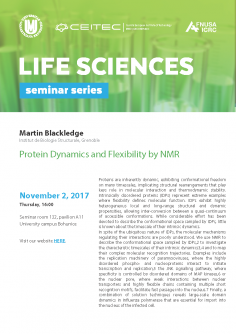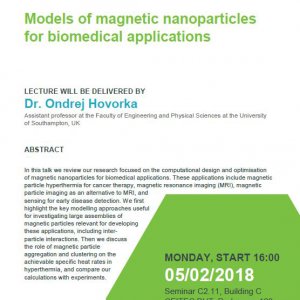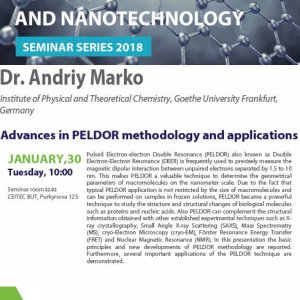Abstract
Proteins are inherently dynamic, exhibiting conformational freedom on many timescales,1 implicating structural rearrangements that play keys role in molecular interaction and thermodynamic stability. Intrinsically disordered proteins (IDPs) represent extreme examples where flexibility defines molecular function. IDPs exhibit highly heterogeneous local and long-range structural and dynamic propensities, allowing inter-conversion between a quasi-continuum of accessible conformations. While considerable effort has been devoted to describe the conformational space sampled by IDPs,2 little is known about the timescale of their intrinsic dynamics.
In spite of the ubiquitous nature of IDPs, the molecular mechanisms regulating their interactions are poorly understood. We use NMR to describe the conformational space sampled by IDPs,2 to investigate the characteristic timescales of their intrinsic dynamics3,4 and to map their complex molecular recognition trajectories. Examples include the replication machinery of paramyxoviruses, where the highly disordered phospho- and nucleoproteins interact to initiate transcription and replication,5 the JNK signalling pathway, where specificity is controlled by disordered domains of MAP kinases,6 or the nuclear pore, where weak interactions between nuclear transporters and highly flexible chains containing multiple short recognition motifs, facilitate fast passage into the nucleus.7 Finally, a combination of solution techniques reveals large-scale domain dynamics in Influenza polymerase that are essential for import into the nucleus of the infected cell.8
References
1. Lewandowski et al 348, 578 Science (2015)
2. Jensen et al 114, 6632 Chem Rev (2014)
3. Abyzov et al 138, 6240 J.A.C.S. (2016)
4. Salvi et al In Press Angew Chem Int Ed (2017)
5. Schneider et al J.A.C.S. 137,1220 (2015)
6. Kragelj et al P.N.A.S. 112, 3409 (2015)
7. Milles et al Cell 163, 734-745 (2015)
8. Delaforge et al J.A.C.S. 137, 15122 (2015)
 This project has received funding from the European Union’s Horizon 2020 research and innovation programme under grant agreement No 692068.
This project has received funding from the European Union’s Horizon 2020 research and innovation programme under grant agreement No 692068.
Disclaimer: This event reflects only the author’s view and the Research Executive Agency is not responsible for any use that may be made of the information it contains.








